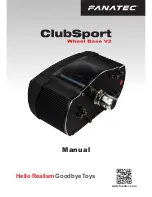
Rockwell Automation Publication SYSLIB-RM056B-EN-P - February 2017
9
PowerFlex 7000 Drive (P_PF7000)
Functional Description
The P_PF7000 instruction provides the following capabilities:
•
Ownership of the drive through the standard P_Mode Add-On
Instruction and modes.
•
Ability to start and stop the drive and motor, to control the drive speed
(via speed reference), to verify whether the drive is running or stopped.
You can also monitor the drive run status and speed feedback. Provides
alarms and drive shutdown for Fail to Start and Fail to Stop if the feedback
does not follow the commanded state within a configured amount of time.
•
Reading from the drive, the instruction displays drive faults, drive alarms,
conditions that inhibit starting the drive, drive predictive maintenance
data, general drive status data, and a number of operating parameters.
•
Ability to read a fault code from the drive and provide descriptive text of
fault codes.
•
Indication of Accelerating, Decelerating, At Speed, Warning, or Alarm
status as received from the drive.
•
Optional capability to support reversing drives, with commands for
forward and reverse rotation, and display of actual rotation direction.
•
Input and alarm for a drive fault condition and an output to send a drive
fault reset to the drive. Provide a configurable time to pulse the drive fault
reset output when a reset command is received.
•
Permissives (bypassable and non-bypassable) that are conditions that
enable a drive start and Interlocks (bypassable and non-bypassable) that are
conditions that stop the drive and help prevent starting. Provide an alarm
when an Interlock stops the drive. Provide maintenance the capability to
bypass the bypassable Permissives and Interlocks.
•
Maintenance personnel can disable (soft lock out) the drive. This
capability is not a substitute for hard lockout/tagout (LOTO) procedures.
•
Monitor an I/O fault input and alarm on an I/O fault. The I/O fault
condition can optionally de-energize the outputs to the drive, requiring
a reset.
•
In Override mode, provide an override state input that determines if the
override is to run or stop the drive (default = stop), and, if the drive is to
run, an override speed reference and direction.
•
The instruction provides simulation capability. Outputs to the drive are
kept de-energized, but the object can be manipulated as if a working drive
were present, including a basic ramp-up of speed feedback value on
starting and ramp-down on stopping. The simulated ramp-up-to-speed
time is configurable. This capability is often used for activities such as
system testing and operator training.










































